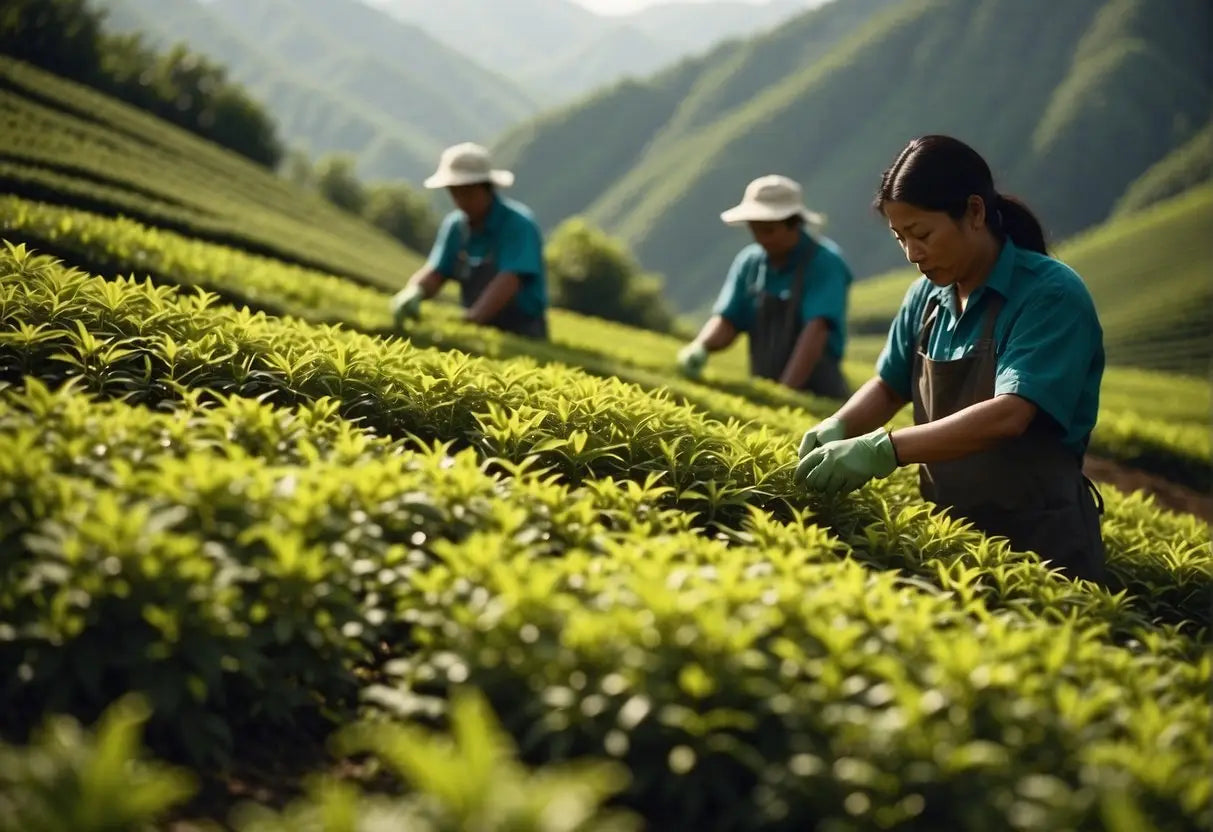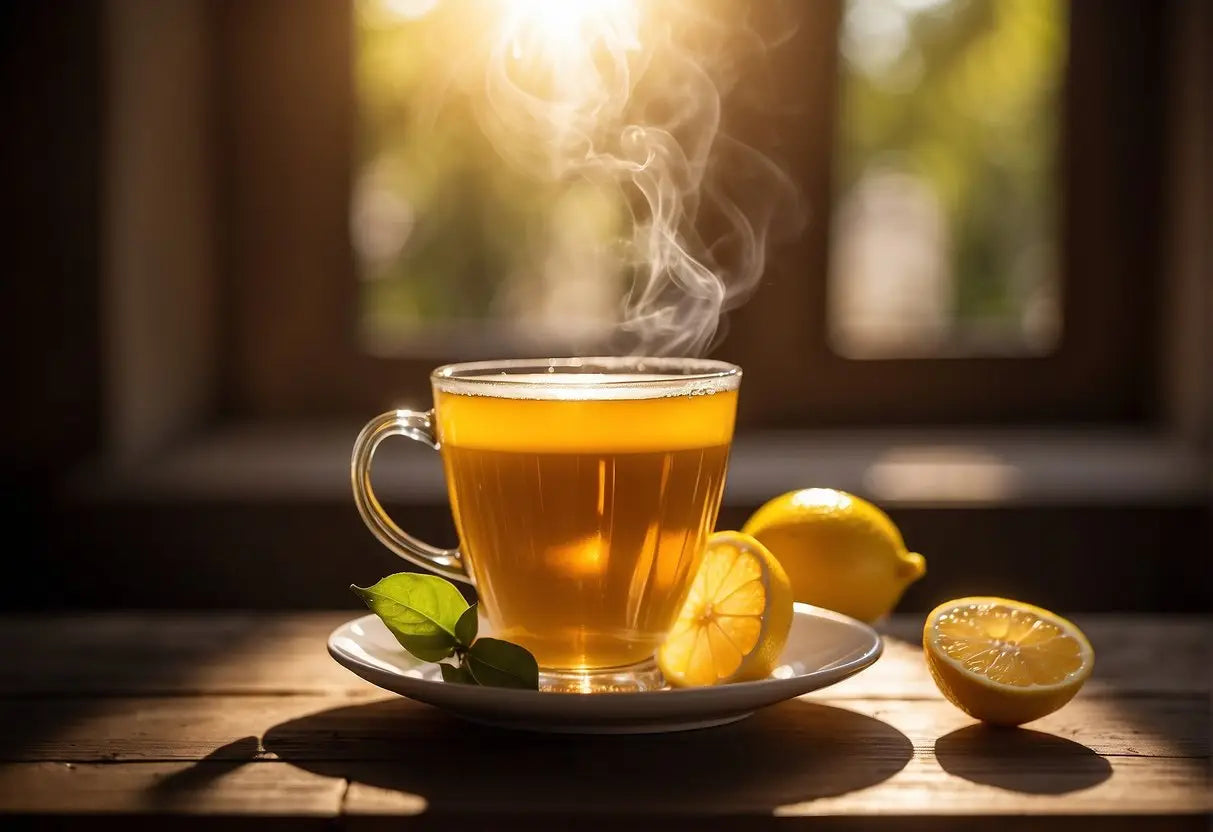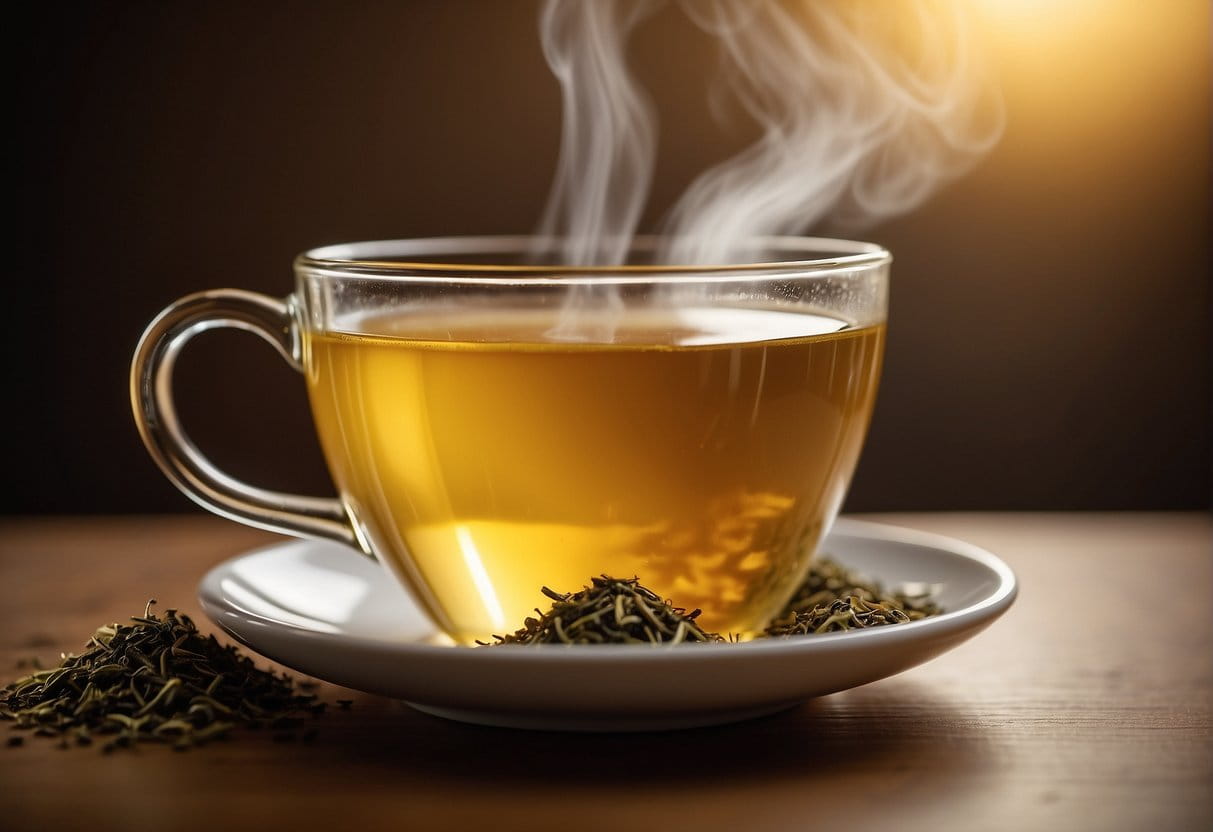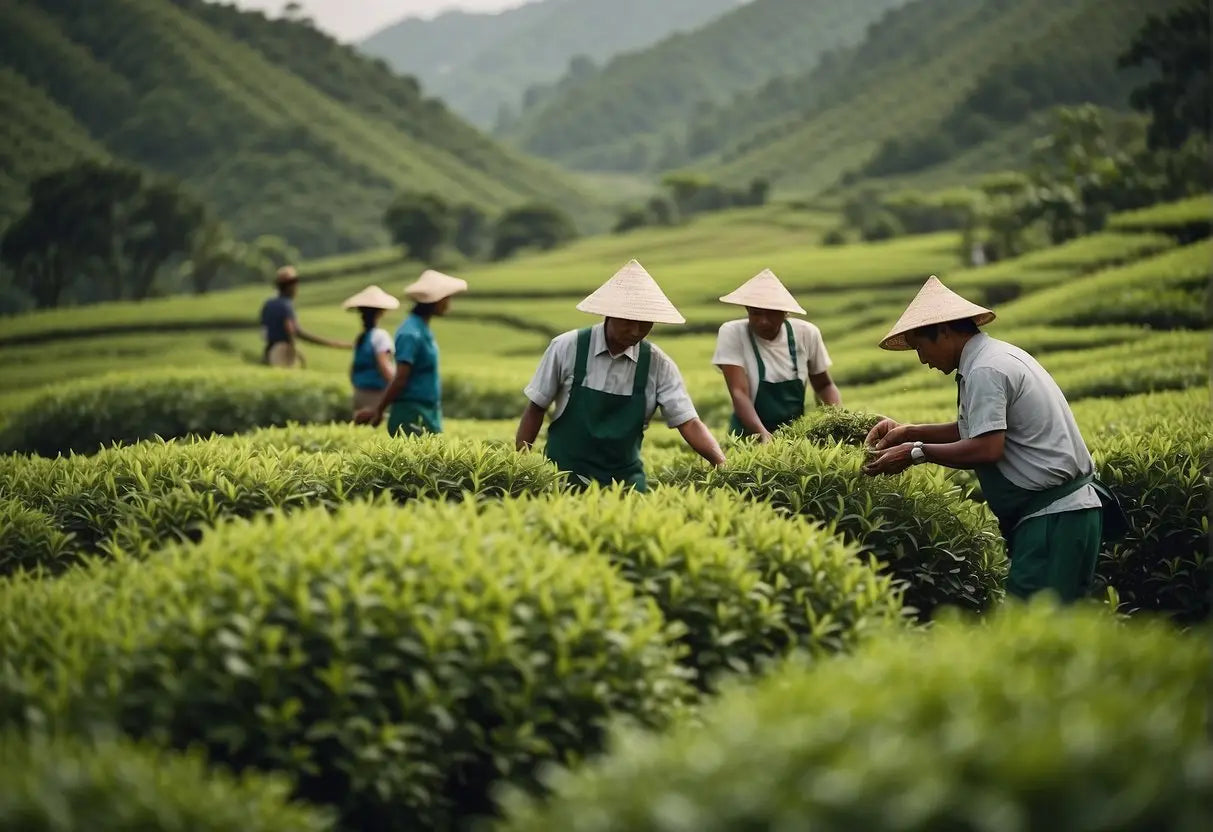Yellow Tea Benefits
Yellow tea is a rare and elegant type of Chinese tea that sits between green and oolong teas in terms of oxidation. It is often prized for its gentle, smooth taste and the unique processing method that gives it its characteristic mellow flavor and yellow hue.
Processing Steps:
- Withering: Freshly plucked leaves are allowed to wither under the sun or in a controlled environment to reduce moisture.
- Pan Firing: The leaves are lightly pan-fired to halt the oxidation process, a step similar to green tea processing.
- Sweltering: Leaves are then wrapped in paper or cloth to lightly oxidize in a process called "men huang," meaning “sealing yellow.”
- Drying: Finally, the leaves are fully dried for storage.
Flavor Profile:
Bestsellers
- Taste: Mild, with a naturally sweet, fruity, and refreshing taste.
- Aroma: Gentle, lacking the grassiness of green teas, with a fragrance often described as fresh and floral.
Health Benefits: Yellow tea is believed to offer health benefits similar to green tea but with a smoother, less astringent flavor, making it easier on the stomach. It may aid in digestion, work as an antioxidant, and help in reducing inflammation.
| Aspect | Description |
|---|---|
| Aroma | Gentle and sweet, without the grassy notes of green tea |
| Taste | Smooth, fruity, slightly floral |
| Caffeine Level | Lower than black tea, slightly higher than green tea |
| Best Enjoyed | Without milk or sugar to appreciate its subtle flavors |
Remember, yellow tea is susceptible to steeping times; steep it for too long, and you risk losing its delicate essence. Optimal brewing often requires a temperature of about 70-80°C (158-176°F) and a steeping time of 1-3 minutes.
History and Origins

Yellow tea, a rare and lightly fermented tea, is recognized for its unique production process that imparts a smooth taste and its historical significance as a tribute tea in ancient China.
Ancient Production
The first records of yellow tea date back to the early Tang Dynasty (618-907 AD). This tea was primarily produced for emperors and the imperial court. The most famous ancient yellow tea is Junshan Yinzhen, from Hunan Province, known for its delicate processing. Processing steps:
- Picking: Harvesting of young tea buds or leaves
- Withering: Reducing moisture content on bamboo mats
- Sweltering: Wrapped in paper or cloth for "sealing the yellow"
- Drying: Final stage to stop oxidation
This meticulous technique of wrapping the tea to induce a slight fermentation gives yellow tea its characteristic color and mellow flavor.
Regional Variations
Different regions in China have developed their own unique yellow tea varieties over centuries. Notable examples include:
- Meng Ding Huang Ya: From Sichuan Province, with a history dating back to the Ming Dynasty.
- Huo Shan Huang Ya: A product of Anhui Province, often boasted for its long, twisted leaves and golden color.
- Wei Shan Mao Jian: Originates from Henan Province and is celebrated for its tender leaves and fragrant aroma.
Key distinctions among these teas stem from variations in:
- Altitude: Affects the tea's growth rate and flavor profile.
- Climate: Influences tea characteristics; cooler climates often yield subtler flavors.
- Soil characteristics: Contributes to the tea’s mineral content and taste nuances.
Processing Techniques
Yellow tea's unique character is shaped by its distinctive processing techniques. As you read on, you will learn each critical phase that transforms fresh tea leaves into the subtly aromatic yellow tea.
Plucking and Harvesting
You'll find that quality yellow tea starts with meticulous plucking. Only the young tea buds and top few leaves are harvested, typically during specific seasons which influence the tea's flavor profile. Ideal plucking conditions entail a dry day, often in the morning, when the leaves are high in amino acids and low in tannins.
Withering Process
Once plucked, the leaves undergo withering. This step involves spreading the leaves thinly on bamboo trays or cloths, allowing moisture to evaporate. Withering is carefully controlled to affect the aroma and body of the tea, ensuring the leaves are supple enough for the next stages.
Fixation and Rolling
During fixation (or "kill-green"), the enzymes in the leaves are deactivated through heat. This is accomplished via steaming or pan-firing, which also helps to bring out the tea's fragrance. Afterward, the leaves are lightly rolled to shape them and break down the cells, enhancing the infusion of flavors.
Lao Ban Zhang
Drying and Finishing
Finally, your yellow tea goes through drying, which solidifies its form and flavor. The leaves can be dried using various methods such as sun-drying, oven-drying, or air-drying. Completing the process, a crucial finishing step unique to yellow tea is the men huan (sealing-yellow). This involves re-steaming the leaves and then wrapping them to encourage a mild fermentation, giving yellow tea its characteristic smooth and mellow taste.
Flavor Profile

Yellow tea offers a unique combination of both aroma and taste that distinguishes it from other tea varieties. It is known for its delicate and subtle flavor profile which is highly appreciated by tea connoisseurs.
Aroma Characteristics
Your experience with yellow tea starts with its aroma, which is often described as mellow and floral. The scent may carry a hint of freshness reminiscent of sweet straw and damp woodlands, a result of the slow drying process unique to yellow tea production. Due to its light oxidation, the aromatics are less pronounced than in black or oolong teas, featuring more nuance and complexity.
Taste Notes
When you sip yellow tea, expect a taste that is:
- Smooth: There's an absence of the astringency commonly found in green teas.
- Sweet: It often exhibits a natural, subtle sweetness with no sharp edges.
- Clean: A clean aftertaste that lingers pleasantly and refreshingly on your palate.
The flavor features floral notes with a slight nutty undertone and sometimes a buttery texture. It's not as vegetal as green tea, nor as robust as black tea, which allows you to appreciate the delicate intricacies of its flavor.
Health Benefits

Yellow tea offers distinct health benefits owing to its unique processing and chemical composition.
Antioxidant Properties
Your body is exposed to oxidative stress daily, which can lead to chronic diseases. Yellow tea is rich in antioxidants known as polyphenols, particularly catechins. These bioactive compounds help neutralize harmful free radicals and support overall cellular health. Studies indicate that drinking yellow tea may lead to a reduced risk of some chronic diseases, including heart disease and certain types of cancer.
Weight Loss Potential
For those seeking to manage their weight, yellow tea can be a beneficial addition to your diet. It is known for its potential to boost metabolism, which may help in burning fat more efficiently. The presence of antioxidants and other compounds in yellow tea can aid in the breakdown of fats in your body. While not a miracle weight-loss solution, regular consumption of yellow tea in combination with a healthy lifestyle may contribute to weight management.
Brewing Methods
To brew a cup of yellow tea that preserves its delicate flavor, you need to pay close attention to water temperature, steeping time, and the method you choose.
Water Temperature
Starting with the right water temperature is crucial for yellow tea. For optimal results, heat your water to 70-80°C (158-176°F). This range is lower than for black or oolong teas, as too high of a temperature can scald the tea leaves and impart a bitter taste.
Steeping Time
Yellow tea should be steeped for about 1 to 3 minutes. Begin by steeping for one minute and taste every 30 seconds to find your preferred strength. Longer steeping times can extract more flavor but also increase bitterness.
Traditional Vs. Modern Methods
Traditional Brewing:
- Use a small, unglazed clay or porcelain teapot.
- Pre-warm the pot with some of the heated water.
- Add about 5 grams (1 teaspoon) of tea per 150ml of water.
Modern Brewing:
- Can involve the use of more accessible tools like a French press or infuser.
- Aim for the same ratio of tea to water as traditional methods.
- Use filtered water to ensure the purity of the tea flavor.
Comparisons to Other Teas

When exploring yellow tea, it's essential to understand its characteristics in contrast to its counterparts. Each tea type has distinctive processing methods and flavor profiles.
Green Tea
You'll find that yellow tea and green tea both undergo minimal oxidation, preserving their delicate flavors. However, yellow tea is lightly fermented and usually has a smoother and less grassy taste compared to green tea. Here's a basic comparison:
| Aspect | Yellow Tea | Green Tea |
|---|---|---|
| Oxidation | Slightly oxidized, with a unique slow drying phase. | Not oxidized, quickly heated to prevent oxidation. |
| Flavor Profile | Mellow, sweet, and lacking in bitterness. | Fresh, grassy, and sometimes astringent. |
White Tea
White tea and yellow tea are both lightly processed, but they have distinctly different drying methods. Consider these points:
- White Tea: Is the least processed and characterized by its delicate flavor and natural sweetness.
- Yellow Tea: Undergoes additional steps, like a controlled oxidation called 'men huan', contributing to its smoother taste and aroma.
| Aspect | Yellow Tea | White Tea |
|---|---|---|
| Processing | Light oxidation with a unique wrapping process. | Least processed, no rolling or oxidation. |
| Flavor | Smooth, sweet, without grassiness. | Delicate, floral, subtly sweet. |
Oolong Tea
Oolong tea differs significantly from yellow tea in terms of oxidation and flavor complexity. Here's a focused comparison:
- Oxidation: Oolong tea is partially oxidized, which can range from 10% to 70%, contributing to a wide flavor spectrum.
- Yellow Tea: Generally has a much lower level of oxidation, leading to a subtler, less robust taste.
| Aspect | Yellow Tea | Oolong Tea |
|---|---|---|
| Oxidation Levels | Mild, creating a gentle flavor palette. | Varies widely, offering diverse flavors. |
| Flavor Complexity | Generally more subdued and less varied. | Ranges from fruity and floral to rich and creamy. |
By understanding these comparisons, you can appreciate the unique place yellow tea holds in the broader tea family.
Cultural Significance
Yellow tea holds a revered place within traditional Chinese tea culture, and its presence is now felt in tea communities around the world.
Chinese Tea Ceremonies
In Chinese tea ceremonies, yellow tea is often associated with historical prestige and rarity. Historically reserved for emperors, yellow tea plays a role in Gongfu tea ceremonies, a detailed and ritualistic preparation method showcasing the tea's delicate aromas and flavors. At these ceremonies, you're likely to observe:
- Precision in brewing: Exact temperatures and steeping times to accentuate the tea's subtle characteristics.
- Elegant presentation: Serving yellow tea in fine porcelain to honor its esteemed status.
Global Influence
Yellow tea's uniqueness has captured the attention of tea connoisseurs globally. You'll see its influence through:
- Education about distinctive fermentation processes that create its signature gentle taste and aroma.
- Premiumization, as yellow tea is often featured in high-end tea shops and menus outside of China.
As you explore yellow tea, remember that its gentle flavors and historical significance make it not just a beverage, but a bridge between past and present tea cultures across the world.
Conservation and Sustainability

When you choose yellow tea, you're not just picking a beverage; you're impacting ecosystems and economies. Yellow tea, a rare variety, requires particular conditions to grow, which are provided by delicate ecosystems often vulnerable to overexploitation and environmental changes.
Sustainable Farming Practices:
- Shade growth: Cultivating yellow tea under a partial shade canopy can increase biodiversity.
- Soil health: Using natural fertilizers enhances soil fertility without chemical runoff.
- Water conservation: Efficient irrigation systems prevent water wastage.
Economic Sustainability:
- Fair Trade: Purchasing yellow tea with fair trade certifications ensures that farmers receive equitable pay.
- Supporting Local: Buying from small-scale producers can foster community development and reduce the carbon footprint.
Preservation Efforts:
- Protected Designation: Some regions have been recognized for their unique tea plants and are protected by law.
- Cultivation of Rare Varieties: Nurseries and research centers are vital for conserving rare strains of the tea plant.
Environmental Impact:
- Carbon Footprint: Monitor transportation methods to minimize CO2 emissions.
- Packaging: Opt for recyclable or biodegradable packaging when available.
As you engage with yellow tea, remember your choice has power. Enforce these practices by selecting brands that prioritize the earth's well-being. Your actions contribute to the collective effort in preserving this delicate treasure for future generations.
← Older post Newer post →











